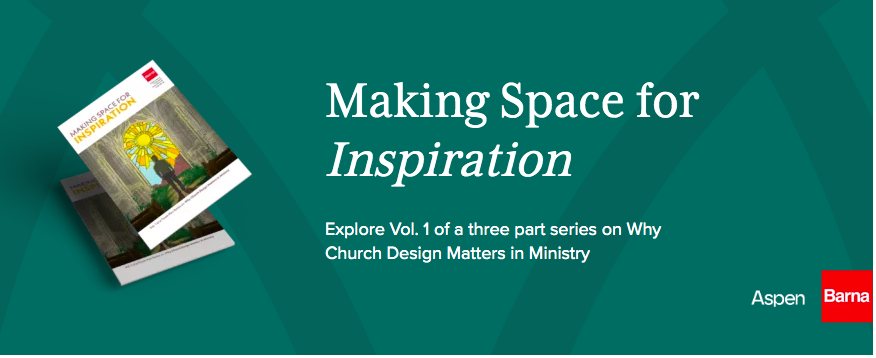Across the nation, pastors and leaders are making their best attempts to disciple congregations and invite the community to connect with the church. In a post-Christian world where Jesus is considered one among many great spiritual teachers, the church’s challenge is to demonstrate how she is different from all the other options. Aspen Group is trying to make the case that our buildings play a strategic role in that challenge.
One of the major themes that Barna Group explores in their research is the idea of transcendence. Transcendence is a feeling of closeness or being in awe of the divine. The research shows that many practicing Christians believe that transcendence is most likely to occur in nature. This feeling is often cultivated by nature’s beauty, calming sense, and the way that the natural elements impact our senses. Instead of creating spaces that attempt to change this narrative, Aspen Group uses biophilic design and the nature surrounds in our designs to ensure that there is inspiration found within the walls of the church.
Even among the faithful, one in four Christians finds it difficult to motivate themselves or their families to show up to church on any given Sunday. Out of the four generations studied in this report, Gen Z is most likely to feel distracted during church services and is most likely to feel unmotivated.
One of the beautiful things about the church is that it provides safety, comfort, and healing to those who visit it. The research in this journal highlights the significance that our homes have on the openness that we extend towards others. Most of us are more likely to have an open conversation about life’s difficulties or mental health in the comfort of our home. Research such as this allows Aspen Group to outfit our clients with furniture, fireplaces, and specific designs that make communal spaces feel like home. Designs like this encourage congregations, visitors, and first timers to attend church in a space that feels comfortable and safe. This narrative also aids in discipleship efforts as pastors can provide a meaningful experience to those they meet with because they are not worried about comfort, bad lighting, or stuffy rooms.
The third part of this journal explains how our society’s faith is impacted by our feelings towards the church and what it should stand for. Christians and non-Christians have different expectations of what the church should off to. Whether that be a place to connect with God, a community of people to do life with, or a sense of sacredness, people have ideas on what a spiritual home should look like. In turn, when a person’s idea of what church should be is not met, they are often more likely to feel less inspired, motivated, joyful, or excited to be in that space. The design of a church is not necessarily the fix to this situation, but it does serve as a tool to help people experience the beauty the Church has to offer in a different, inspiring, and intimate way.
We all have an innate longing to be met by God, to be a part of a community in which we feel safe and seen, and to feel like we have a place that feels like home even when we feel at odds with the world. Aspen Group is making the case that the design of ministry spaces is an overlooked critical piece in for churches to shape discipleship, including responding to people’s emotional and spiritual needs.
In partnership with Aspen, Barna Group conducted a study to understand the perceptions and perspectives on the importance of Church space and what that means for the future. The report Making Space for Inspiration offers an in-depth analysis of what diverse groups think about the importance of physical space and its impact on spiritual formation.
To find out more about Making Space for Inspiration and to purchase your copy, follow this LINK!

